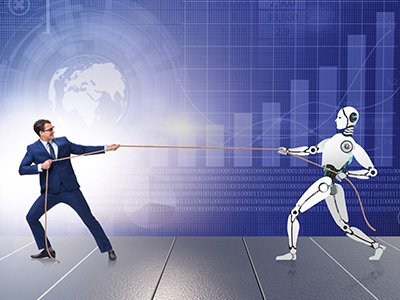Balancing Human Expertise and Artificial Intelligence

Artificial Intelligence (AI) is making big waves in the CNC machining industry, especially in aerospace and medical manufacturing, where precision is non-negotiable. As AI continues to advance, the challenge becomes finding the right balance between human expertise and AI-driven innovation. Here’s why this balance is critical for achieving optimal results.
Why AI and Humans Need to Work Together
- Precision Meets Efficiency
AI excels at optimizing machining processes. It can analyze vast amounts of data in real-time, making adjustments to cutting speeds, tool paths, and material usage to improve efficiency and bring consistent results. But AI doesn’t replace the need for human oversight. Skilled engineers are still needed to oversee complex designs and ensure the system is set up correctly for each unique project. Human expertise ensures that the AI is working within the parameters that meet your exact specifications. - Problem-Solving and Customization
While AI can automate routine tasks and adjust variables based on patterns, it lacks the intuitive problem-solving skills of an experienced machinist. When faced with complex or non-standard parts, humans play a key role in troubleshooting and adapting to unexpected challenges. For instance, in aerospace, parts may require specific tolerances or surface finishes that demand creative adjustments—something AI can’t fully replicate without human intervention. - Quality Control and Final Checks
AI can continuously monitor the machining process, reducing the chance of human error, but there’s no substitute for the critical thinking of an engineer when it comes to final inspections. In high-stakes industries like aerospace and medical, human judgment is essential for ensuring that all parts meet stringent regulatory standards and safety requirements. - Training and Adaptation
AI is a tool that learns and improves over time, but it requires skilled operators to train and fine-tune its algorithms. The process of implementing AI into a CNC shop can involve a learning curve. Engineers and machinists must work together to teach the system how to best handle the specific requirements of each part or project.
Striking the Right Balance
Ultimately, the most successful CNC machining operations in the aerospace and medical sectors will be those that combine AI’s power to optimize processes with the creativity, adaptability, and experience of human engineers. AI can provide the tools to enhance efficiency and precision, but human expertise ensures that those tools are applied correctly and that the end product meets the highest standards of quality.
Life-Saving Precision
At Protomatic, we are committed to balancing AI with the critical human oversight needed to ensure Life-Saving Precision in in every part and device we make.
CONTACT US DIRECTLY. Phone 734-426-3655
- Scott Allen, Sales Manager Scott@Protomatic.com
- Lori Franz, Sales Lori@Protomatic.com
- Doug Wetzel, VP/GM Doug@protomatic.com
- Brian Heldt, Program Manager Bheldt@protomatic.com

About the author: Doug Wetzel is Vice President and General Manager of Protomatic.


